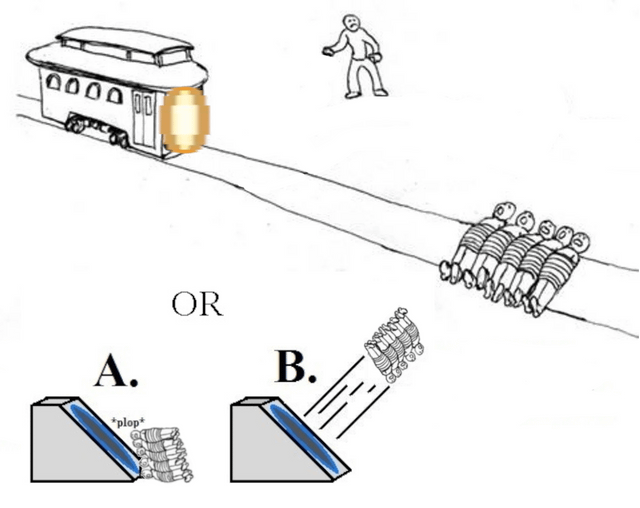this post was submitted on 18 Aug 2023
924 points (97.0% liked)
Memes
46031 readers
1650 users here now
Rules:
- Be civil and nice.
- Try not to excessively repost, as a rule of thumb, wait at least 2 months to do it if you have to.
founded 5 years ago
MODERATORS
you are viewing a single comment's thread
view the rest of the comments
view the rest of the comments

Relative to the train, and by extension the portal, the people are moving towards it at the same speed as the train relative to the ground, since the people are tied to the ground. I'm gonna work with the definition of momentum that equals it to the velocity of an object times its mass, and with the assumption that the portals conserve mass and momentum of the objects during teleportation, or with negligible losses. Having found that the momentum stays constant, and given the mass before and after teleportation is constant, the velocities relative to the portal are gonna be constant too. (p1=p2 <=> mv1=mv2 <=> v1=v2). And since the velocity of the people relative to the portal is the velocity is the train relative to the ground, and the velocity of the train relative to the ground is far bigger than the velocity of the people relative to the ground, the answer is gonna be B, where the people shoot out of the portal with great speed.
If the people actually go into the portal and not under it that is.
If that is so, the train or portal would have to lose its momentum for the transfer to happen otherwise you'd be generating more relative velocity after the portal. I can't imagine portals transfering monentum, only maintain it.
Think of it as a pole entering the portal, the end will have to exit at high speeds and so it will need to drag the rest of it out at that speed
That might be the crux of it.
If you replaced the people with a pole on a roller, you wouldn't expect the pole to get sucked into the portal or to roll towards the tram as it advanced, right?
That is what would happen if people were launched out of the other side of portal. The part of the pole that has been launched would drag the remainder of the pole with it.
But that wouldn't happen.
The pole would just lay there until the tram passed it by, so the answer must be A. There's no momentum added to the pole as the tram passes it by. The only thing that changed is the location of the pole.
You almost arrived at the correct answer. The problem is that would happen. More specifically we know that four fundamental interactions can pass through the portals, e.g. a thing that is whole before passing through portals is still whole after passing through them, though for any pair of particles, atoms, neutrons and protons etc. there was a moment in time where they were separated by the portal. If you imagine the portal moving towards the pole at some speed and in the middle of it suddenly stopping, the momentum of the part on the other side would slightly pull on it, and the pole would still be moving at a reduced speed. The momentum of the second part cannot disappear and will pull on the first part. The only other reasonable option is that the pole gets split, but that obviously is not the case. So B it is
If the pole is entering the portal at the rate of 60 miles per hour, it must exit the portal at the same rate. After a minute, 1 mile of pole has entered the portal, and 1 mile has exited it. If it exits more slowly than it enters, where is the missing part of the pole?
And if it exits at the speed it enters, does it lack momentum despite clearly being in motion outside the second portal? Does it magically halt when all of it has passed through?
The front part of the pole wouldn't pull the back part of the pole more so than in any normal contiguous space. If you send a pole flying from the front and catch it mid-flight from the back stopping its motion, you'll have to apply a force opposite in direction to the motion of the pole, and by Newton's third law (every action has an equal and opposite reaction) it's gonna pull you towards the direction it's moving by reactionary force while decelerating.
In the case if moving portals, it might be a bit confusing, but what it comes to teleportation through the portals, the portals are absolutely stationary the world around them moves. And in the case only one of the two portals move relative to the ground, not only does the world move relative to both portals, it also deforms in a non-euclidean manner. That is why the pole that was stationary relative to the ground suddenly started moving after coming out the portal. And yes, it would require massive amounts of energy for the portal to function like that and keep its own momentum relative to the ground after teleporting things, but tbh that's a woe for Aperture science, not mine 🙂
Your did the math! 😁
They didn't do the math.
They just mentioned some of the formulas.
It's the difference between reading a book and knowing the book exists.